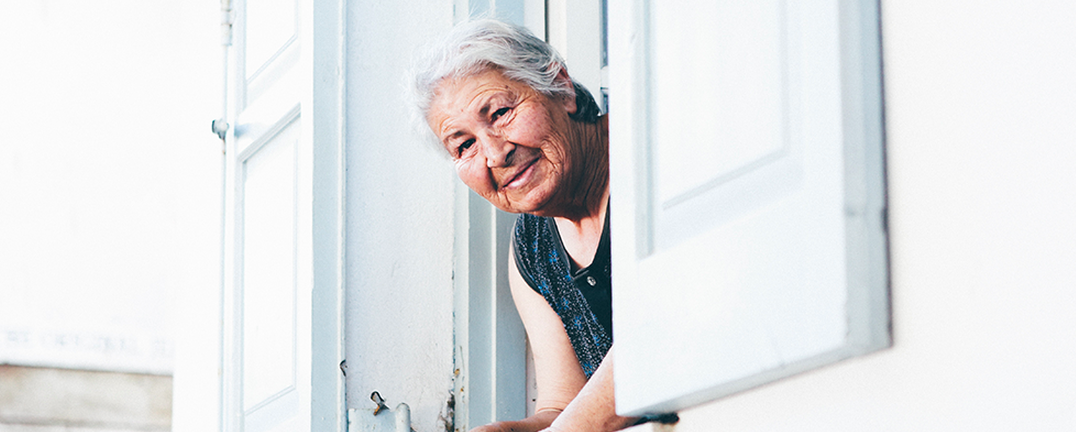Transforming Senior Living Through Wellness
How can we support a growing senior population through wellness-focused living?

We often see generations shift entire industries, and today’s generation of seniors are no different. Baby boomers (those born between 1946 and 1964) are increasingly faced with decisions regarding late-in-life care, for both their elderly parents and themselves. Given this, the need for safe and inviting senior communities has never been higher, and demands and expectations on how and where they want to live this next chapter of their lives is rapidly shifting the market.
As part of our commitment to understand and inform the latest trends in building design, IWBI CEO Rick Fedrizzi recently addressed the Senior Living Innovation Forum, highlighting some of the largest concerns faced by the senior housing industry today, and more importantly, providing a critical solution to them: wellness. At the same time, our staff across the globe attended Bisnow’s Multigenerational Living event to learn more about the growth of the UK’s expanding senior living market.
Over the next 10-15 years, the population of Americans aged 65 years or older will more than double, becoming 25% of the U.S. population. For the first time in U.S. history, older people will outnumber children. This shift poses unique challenges for senior living developers, who aim to provide a desirable living space for residents as well as attract and retain staff of a different generation.
“As the preference of the boomer generation remains to age-in-place, the senior housing industry is increasingly competing with the smart home market that may be appealing to a wellness-conscious consumer,” said Fedrizzi. “Because more than half of health issues seniors face can be addressed through changes in behavior and tweaks to their living spaces, aging in place will be an attractive option. But community living will still play a critical role, and through wellness-centered senior communities, we are able to not only help improve satisfaction and quality of life, but also reduce the rate of hospital admissions.”
Seniors will spend an overwhelming majority of their time in the house, which means they are more discerning homebuyers, explained House of Lords member Lord Richard Best. Wellness is a unique incentive for those who can make key design upgrades and stay in place longer.
Take, for example, lighting design. By eliminating glare in bedrooms, we can significantly reduce the chance of falling, which is the number one cause of hospital admissions. Through circadian lighting design, we can support improved sleep-wake cycles for those who may be suffering from dementia-induced anxieties that typically occur around sundown - in the U.K., that’s nearly one million people by 2025, increasing to two million by 2050.
The value of such thoughtful design upgrades that create better living environments is becoming increasingly recognized as a key differentiator in senior housing. “There is growing investment in the senior living sector as the market matures and a long-term aspirational approach is needed”, notes LaSalle Investment Management Fund Manager Eleanor Lindsay.
The WELL Building Standard (WELL) provides expert guidance across 10 key areas of building design, operations and policy that can directly impact the health and well-being of our loved ones – Air, Water, Nourishment, Light, Movement, Thermal Comfort, Sound, Materials, Mind and Community. Transforming senior living communities through wellness creates a competitive advantage for the senior living industry, explicitly addressing the common health concerns of the people who live there, all the while providing reassurance for their families.
As senior housing attract more residents, an even bigger challenge becomes retaining staff. Staff turnover is currently around 25% per year, and memory care in particular is almost double that. Integrating wellness benefits and ensuring that staff feel valued can help retain staff and reduce turnover. For example, implementing restorative spaces and mindfulness programming onsite – another feature in WELL – to help manage stress and support mental health of employees.
Recognizing the potential to transform the market, leaders in this industry have already begun to adopt WELL. There are now seven WELL senior living projects totaling 1.5 million square feet across three countries.
The need for living environments that support healthy aging is more critical now than ever. “WELL spaces provide an immeasurable opportunity to enhance our parent’s health and quality of life – but also benefit everyone who occupies the space – the caretakers, administrative staff, visitors and residents alike,” Fedrizzi continued. “When it comes to the people that we care about, health and wellness will always be a number one priority.”

